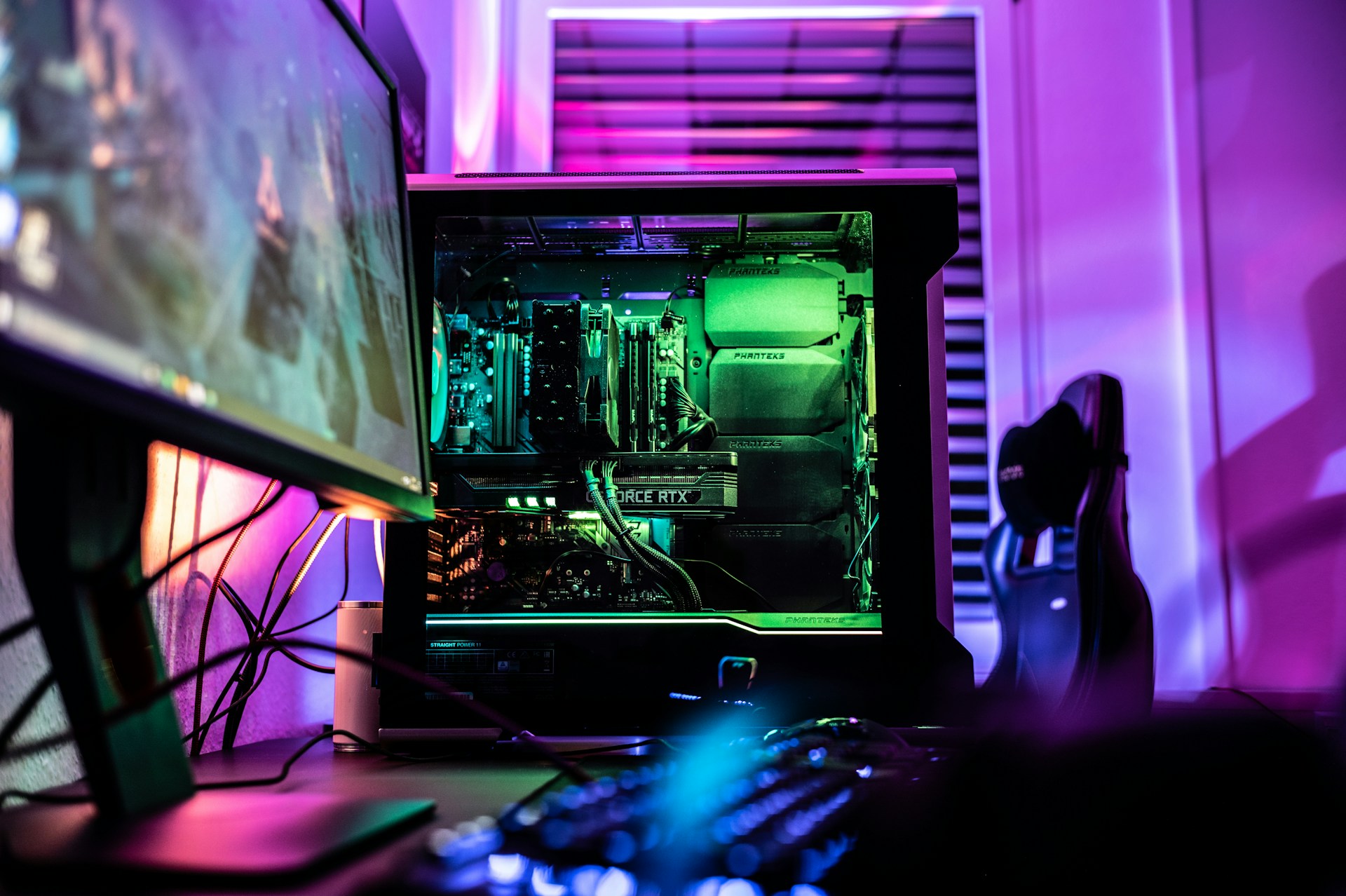Most of today’s screens are impressively bright, providing users with rich assortments of lifelike colors. But, if you’re dealing with a dead pixel, that’s a problem that can negatively impact the enjoyment you get from your screens.
A dead pixel occurs when it stays turned off due to not receiving power. Transistor damage and manufacturing flaws are a couple of things that can cause them.
Fortunately, you can test for dead pixels. It’s best to do that if you suspect there’s a problem and want to confirm it before taking further action. Also, keep in mind that dead pixels only apply to liquid crystal display (LCD), thin-film transistor (TFT) or organic light-emitting diode (OLED) screens.
That covers the majority of screen technology on the market today. But, if you’re dealing with an older appliance, such as a TV that’s several decades old, dead pixels are likely not the issue.
What Causes Dead Pixels?
Now you know that dead pixels are a matter of not receiving power, but why does this happen? More often than not, dead pixels are the result of a manufacturing defect. If manufacturers didn’t connect a pixel’s transistor correctly, or if a part got damaged during the manufacturing process, it can lead to dead pixels.
Since there are millions of pixels in one display, the errors that cause one to die could be impossible to notice until it’s too late. Most big brands understand this risk and take steps to ensure they avoid pixel damage while manufacturing screens. Still, mistakes do happen, so no company is immune to this problem.
Manufacturer defects aren’t the only thing that causes dead pixels, either. Physical damage can also interrupt the power connections in your screen, leading to the same problem. So if you’ve ever dropped or bumped into your screen, that could’ve caused a dead pixel too.
No matter what causes your dead pixels, it can be a nuisance. If you suspect you might have one, here’s how you can be sure.
Do You Have a Dead Pixel or a Stuck Pixel?
Before we get into the specifics of testing for dead pixels, it’s important to clarify the difference between a dead pixel and a stuck pixel.
As mentioned earlier, dead pixels don’t get power. Since they never light up, they cause black — and occasionally white — spots on the affected screens. In contrast, a stuck pixel always stays on even after the ones around it turn off.
You can recognize a stuck pixel as a colored dot on your screen — the most common pixel hues are red, green and blue. Some potential fixes aim to restore normal function to the stuck pixel.
They do this by rapidly flashing colors across the screen to try and make the stuck pixel start working again. But, if the testing methods we’ll go through below show that you have a dead pixel, fixing it is usually impossible.
What Is the Easiest Way to Find Dead Pixels?
The good news is that you don’t need to take your device to a tech specialist for a dead pixel test. You can perform one in your house or any other place where you access the suspect device. Here’s how to test for dead pixels.
Website-based pixel testing tools take you through a process of viewing colors on your screen. Doing this makes it easier to see dead pixels. For example, Dead Pixel Buddy instructs users to use full-screen mode, then use the keyboard arrows to cycle through various blocks of color that take up the entire monitor.
Then, a pixel test at the LCDTech website works similarly but specifically warns people to clean their screens before attempting the assessment. That’s because specks of dust and dirt can mimic pixel problems.
CheckPixels is another pixel-checker web app. When giving that one a try, you click anywhere on the screen to switch to a new color. Any of the tests here will help you figure out if there’s a dead pixel to blame or another problem at the root of your issues..
How to Test for Dead Pixels on Mobile Devices
The options in the previous section are ideal for people who want to look for dead pixels on a computer or the large screen of a smart TV. However, when you’re worried about problematic pixels on a tablet or a smartphone, the easier route to take is to download a specialized app to do the job.
You can check for dead pixels on Android devices by using the Dead Pixel Test app from the Google Play store. If you’re an iOS user, the Screen Test app on the Apple store is a good alternative.
Can a Dead Pixel Be Fixed?
Now that you know how to test for dead pixels, maybe you’re frustrated by the results. If one of your devices has one or several dead pixels, beware of quick fixes with enticing promises. As mentioned earlier, those solutions are virtually non-existent.
Once you’re sure you have a dead pixel, you might want to wait a few days before taking action. The issue could resolve itself. This, of course, is a best-case scenario, but it’s worth a shot before spending money on another dead pixel fix.
If you still have warranty coverage for your screen, get in touch with the brand about your concerns. Many screen warranties cover dead pixels since it’s usually a matter of manufacturer defects. However, before you get too upset, check the gadget’s owner’s manual. Some brands explicitly state that they permit a small number of dead pixels and how many. Then, they won’t replace gadgets with those minor flaws.
It’s also smart to get in the habit of checking all your new gadgets for dead pixels as soon as you bring them home. That way, if you notice something’s not right, you can immediately be proactive by speaking to the retailer. You’re more likely to get help the earlier you notice the problem.
If your warranty is expired or won’t cover the issue, the only reliable dead pixel fix is to take your device to a specialist. An experienced computer or TV repair technician may be able to fix your dead pixels, but it likely won’t be cheap. The technician will most likely have to replace the entire screen, which, depending on your device, could be costly and time-consuming.
Otherwise, if the defective pixel bothers you too much, consider selling it through a channel like Craigslist and being honest about what’s wrong and the extent of it. Then, you could put the cash from a sale towards a new gadget with pixels that work as they should.
How to Fix a Stuck Pixel
As mentioned earlier, a lot of people think they have a dead pixel when really they have a stuck one. If you test for dead pixels and notice that they’re stuck, not dead, there’s good news. While you can’t fix a dead pixel on your own, that’s not the case with stuck pixels.
The easiest solution is to try JScreenFix, a free tool that works on most screens, whether they’re LCD or OLED. When you launch JScreenFix, you’ll see a box on a black screen. If you haven’t already, find the stuck pixel, then drag this box over it. Leave the box in that position for ten minutes, and it should resolve the issue.
It may seem like magic, but this process is reasonably straightforward. JScreenFix randomly turns each pixel in the box on and off up to 60 times a second. These fast, uncoordinated power changes will likely revive any stuck pixels after enough time.
JScreenFix says it’ll fix your pixel problem in ten minutes or less, but some users say you may need to wait as long as two hours. If that doesn’t work, you could be dealing with a dead pixel. You’ll find other suggestions for fixes out there, like applying heat or pressure to the screen, but these could damage your screen.
Testing Is the Easy Part
As this overview shows, testing for a dead pixel is one of the most straightforward tech tasks you can do. After that, you’ll have the information needed to decide how — or if — to respond to the matter.
Recent Stories
Follow Us On
Get the latest tech stories and news in seconds!
Sign up for our newsletter below to receive updates about technology trends














